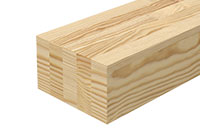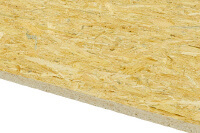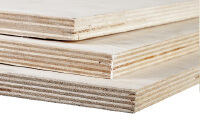Clematis, wisteria or perhaps the slightly more familiar fragrant pea? What these plants have in common is not only their irresistible charm, which will please the eye of any gardening enthusiast, and the stunning scent of the flowers, but also the fact that each of them likes to climb. Sure, you can limit yourself to planting them next to already existing vertical structures like terraces or balconies, but what’s the point? Impressive vines will quickly start to peek through our windows, and the insects that live in them will not necessarily be welcome guests in our kitchens and living rooms. So what can we do to enjoy wisteria flowers or vine fruit without having to fit a mosquito net to every window? The advice is simple – build a garden pergola.
No need to fear, if you have a bit of carpentry savvy, such a wooden pergola should not be too much of a challenge for you. You don’t have to go for a huge structure straight away; a garden pergola can simply be a small support for a single climbing plant. Unless, of course, you feel confident enough in the subject of wooden structures to build a large pergola that can be used as a shady gazebo on a sunny day.
Both options can make a beautiful decorative feature in the garden, but think carefully about the location and size of the project before you decide to run to the workshop for planks and squared timbers. The orientation of the plot in relation to the world’s directions is worth considering at this point – some plants, such as vines, crave sun, others, such as climbing hydrangeas, prefer partial shade. Also pay attention to the quality of the soil and irrigation in your chosen location; some plants will not do well in a clay substrate. Once these decisions have been made, it’s time to designate the right place in the garden – unless you’re building a small structure that you can simply move from place to place. In the case of a larger garden pergola, you won’t be without the help of a hammer and anchors that will ultimately hold the main posts of the structure. At this stage, you will need a spirit level and some string to hold the plumb line and the level to create a stable structure.
A hammer, mallet, tape measure and spirit level are just some of the tools you will need to build the pergola. You will also need a jigsaw, a screwdriver and an angle grinder, as well as files, sandpaper of various gradations, brushes for applying waterproofing and, of course, wood screws and carpentry fasteners, which will be responsible for the stability of the whole structure. There is more to come on fixing systems, but in the meantime we will return to the work sequence.
Once you have a set of tools waiting in the workshop, it is time to work on the wood. Keeping strictly to the specified dimensions, the structure should be made of planks and squared timbers, with attention paid to their size. If you want to build a larger structure, take into account the load that its main columns will have to bear. Here, it is worth considering, by the way, what type of wood you intend to build your pergola from. Specialists value the extremely weather-resistant robinia, although hardwood varieties of native oak and beech will work just as well. The cheapest and most readily available solution will be the common, readily available pine, although it must be remembered that its wood is quite soft. There are also lovers of the exotic who reach for jatoba or teak, although such a construction may then be priced in the catalogue of luxury goods.
If you are artistically inclined, at this stage you may also be tempted to make a decorative template, which is cut out of thick cardboard to be later traced on part of the planks and cut out with a jigsaw. On the upper planks of the future pergola, we advise you to cut grooves to help you connect the structure. Before you start assembling, use a grinder, sandpaper and files (for example, in the cut groove holes) to smooth the surface of the wood. Dusted and cleaned with a broom or compressed air, the planks can now be painted with a specially selected impregnator to protect the wood from moisture and microbial growth.
When the wood is protected and ready for further work, assembly can begin. This is where a little knowledge of wood screws comes in handy, because depending on the type of fixing, it is advisable to use a dedicated product. Klimas Wkręt-met has a variety of carpentry screws in its offer, including plate construction screws. It is with these that the pergola posts are fixed, which must first be set into the previously prepared anchors. Crosswise planks, which are to reinforce the whole structure, are fixed once with the use of a previously made groove in the plank, and the second time – with the use of carpentry fasteners offered by Klimas Wkręt-met, made of galvanised steel and specially designed for this purpose WKLC screws, which are a new, particularly interesting proposition in the company’s offer. WKCP and WKCS carpentry screws with deep TX drives from the Klimas Wkręt-met catalogue will be great for connecting wooden elements in roof structures, especially as the producer promises no need to pre-drill holes. A great improvement in this case is the milling tip of the screws produced by Klimas Wkręt-met, which, thanks to the appropriate cutting notches and double thread on the spike, makes work much easier, above all because the fastenings efficiently screw into the wood from the first turn. In order for the pergola to be a stable structure, it is necessary that the fastened element is sufficiently firmly tightened and that the parts adhere tightly to each other after joining, which is why, at this stage of the work, the aforementioned carpentry screws, which are, after all, by design capable of joining the walls of frame houses, for example, are the best solution. Long wood screws will help in the case of more powerful constructions, while in the case of choosing the material for the pergola from among exotic types of wood, Klimas Wkręt-met offers special stainless steel screws for floors, terraces and other wooden constructions, which will ensure proper pressure of the elements. Before starting work on the pergola, it is also worth securing yourself with KMWHT screws with TX drive and with flat countersunk head, which are designed for connecting wooden and wood-based elements in such constructions as, among others, our pergola. The hardened KMH/KDH wood screws with PZ drive and incomplete thread and flat countersunk head are also useful, as they are equally suitable for connecting wooden elements as well as OSB or MDF panels.
The structure is now standing firmly in the garden, so it is time for the final touches. A good idea is to screw hooks into the posts, through which the twine will be threaded. This will give the vines something to grab onto and their branches will eventually also provide the inhabitants with some much-needed shade on hot days. Now the final question remains, namely the selection of suitable plants. Depending on the orientation towards the world, the amount of sunshine or the type of soil, each pergola will have a different set of plants. The basic prerequisite for their proper growth, however, is the amount of sun they need to live. Whether you have a pergola in the sunny south or rather in the northern part of the plot, your garden can be drowned in flowers. The most important thing is to choose the right plants, so if your structure stands in rather partial shade or in the shade, be tempted to go for ivy, climbing hydrangea, large-leafed cocornacia or Japanese hydrangea vine. These plants feel at home in shady areas, pleasing the eye with their dark green leaves or filigree fragrant flowers. Are you enjoying the midday sun in your garden? Great, so you can safely decide to plant your pergola with clematis, wisteria or honeysuckle. If you prefer beautifully coloured foliage to flowers, you can opt for five-leaf honeysuckle or mottle-leaf actidonia, which, in addition to its colourful foliage, also bears fruit reminiscent of tiny kiwis. Although they are not particularly attractive culinarily, they look great in the garden.






